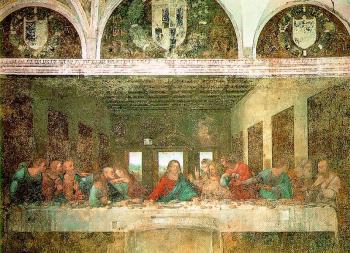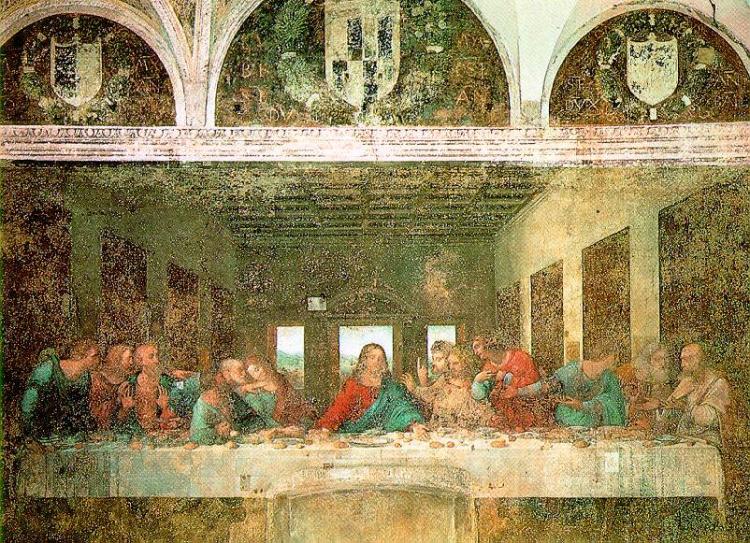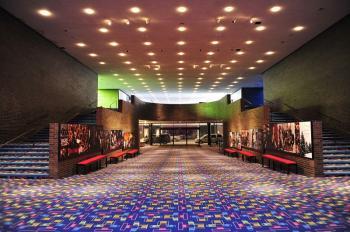Columbia art history professor David Rosand helps us follow the yarns of these masters woven into the tapestry that is the Renaissance.
According to Dr. Rosand, Giorgio Vasari chronicled the Renaissance with a special focus on Florence. His favorite place, Florence was also home to both Leonardo and Michelangelo, who also happened to be Vasari’s friend. Vasari structured this rich period into three phases, roughly corresponding to the 14th, 15th, and 16th centuries.
Rosand contends the Renaissance really begins with Leonardo. “What Leonardo does in effect is to gather up the entire advances in 15th century art.”
Weave in an in-depth knowledge of math, and you’ve got a key thread introducing perspective. “Crucial to Western painting from the 15th century on is the art of perspective, that is, perspective construction—the construction of a spatial illusion that is based upon mathematical certainty, or applied geometry,” Rosand says.
The Last Supper
Religious themes, saints, and events have been the subject matter of Western art prior to the Renaissance. Leonardo da Vinci’s mural of the Last Supper “introduces us to a very fundamental theme in Western art, that is, in Western Christian art.”
Leonardo was quite impatient about painting using the fresco method—mixing powered pigment with wet plaster. In the process, he experimented with different media to make it unlike other fresco paintings.
Dr. Rosand says his approach works with limited results. “Within his own lifetime, it was already peeling from the wall. And it has been a wreck ever since, repainted and repainted and repainted. The [most] recent restoration essentially took off all of the repaint.”
Art history records many depictions of this scene in Jesus’ life. But Leonardo’s work set the standard, according to Rosand. “It became the most significant representation of the Last Supper. What he did was to bring together the standard personalities—the characters, namely Christ and his disciples—around the table.”
But unlike other artists, Leonardo organized his subjects with a singular style. “The standard distribution of the 12 disciples in the paintings that preceded Leonardo’s was to have them spaced along the entire table. One of the crucial aspects of Leonardo’s composition is that he took the 12 and he grouped them in four groups of three … [and each of] the three figures [in each group] reacts somewhat differently.”
Leonardo made this depiction his own, with details such as Judas’s flushed face, signaling his forthcoming betrayal, and little personality traits of the other disciples. One of the primary elements of that meal depicts a key Catholic belief. Christ is pointing out that “the bread represents his flesh and the wine represents his blood. His flesh is the wafer of the Eucharist.”
With the most recent restoration effort, visitors to the convent of Santa Maria delle Grazie, Milan, can appreciate Leonardo’s Last Supper for the Renaissance masterpiece that it is.
Columbia University professor Rosand has served twice as chairman of the Department of Art History and Archeology, as director of Art Humanities, and as chairman of the Society of Fellows in the Humanities. He currently chairs the department’s Wallach Art Gallery Committee. The second annual Chinese International Figure Painting Competition will exhibit winners’ works between Nov. 29 and Dec. 10, 2009, at the Salmagundi Art Club, New York. For more information, please visit oilpainting.ntdtv.com/en.
This article was completed with additional reporting by NTDTV, a media partner of The Epoch times.






